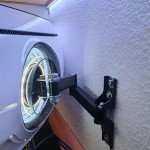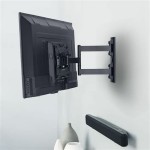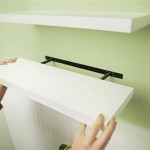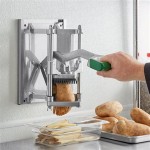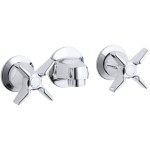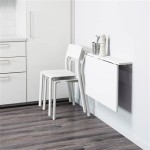Wall Mounted Bird Feeder Hanger: A Comprehensive Guide
Wall mounted bird feeder hangers provide a practical and aesthetically pleasing solution for attracting birds to a garden, patio, or balcony. Unlike ground feeders, which can be susceptible to pests and weather damage, or hanging feeders suspended from trees, wall mounted options offer a stable, elevated platform, free from the sway of branches and easily accessible for refilling. Understanding the various aspects of these hangers, from material selection to installation and maintenance, is crucial for maximizing their benefits and ensuring the safety and well-being of visiting birds.
These hangers are generally constructed from durable materials like wrought iron, powder-coated steel, or heavy-duty plastic, designed to withstand the elements and bear the weight of a full bird feeder. The mounting hardware typically includes screws and anchors suitable for different wall types, ensuring a secure and stable attachment. Their design allows for a feeder to be hung directly from the arm, or a decorative hook can be used to add an additional touch of elegance. Beyond functionality, wall mounted bird feeder hangers contribute to the overall aesthetic of an outdoor space, blending seamlessly with various architectural styles and garden designs.
The selection of a suitable wall mounted bird feeder hanger involves careful consideration of several factors, including the weight and type of bird feeder, the wall material, and the desired aesthetic. Understanding these factors is essential for choosing a hanger that is both functional and visually appealing.
Key Point 1: Types of Wall Mounted Bird Feeder Hangers
The market offers a variety of wall mounted bird feeder hangers, each with its unique characteristics and suitability for different needs. Understanding these types is crucial for choosing the right hanger for a specific application.
Wrought Iron Hangers: Wrought iron hangers are known for their durability and classic aesthetic. They are often handcrafted and feature intricate designs, adding a touch of elegance to any outdoor space. Their robust construction allows them to support heavier bird feeders, making them suitable for larger capacity feeders or multiple smaller feeders. However, wrought iron can be susceptible to rust if not properly treated, so a powder coating or regular maintenance is recommended.
Powder-Coated Steel Hangers: Powder-coated steel hangers offer a balance of strength and affordability. The powder coating provides a protective layer against rust and corrosion, making them suitable for outdoor use in various weather conditions. These hangers are typically available in a range of colors and styles, allowing for easy integration with existing outdoor décor. While strong, they might not be as ornate as wrought iron options.
Heavy-Duty Plastic Hangers: Heavy-duty plastic hangers are a lightweight and cost-effective option. They are resistant to rust and corrosion, making them ideal for coastal environments or areas with high humidity. While not as visually striking as metal hangers, they are available in various shapes and sizes and can be easily cleaned. They are typically best suited for lighter bird feeders.
Adjustable Hangers: Adjustable hangers offer flexibility in terms of reach and height. They typically feature a telescoping arm that can be extended or retracted to accommodate different feeder sizes or desired viewing angles. This adjustability can be particularly useful for balconies or patios where space is limited. The adjustable mechanism should be of high quality to ensure stability and prevent sagging.
Decorative Hangers: Decorative hangers prioritize aesthetics, often featuring intricate designs, ornate details, or unique finishes. These hangers can serve as a focal point in the garden, adding a touch of personality and charm. They are available in a wide range of styles, from rustic to modern, allowing for customization to match individual preferences. However, decorative hangers may not be as robust as more utilitarian options, so it is important to consider their weight capacity.
The choice of hanger type depends on factors such as the weight of the bird feeder, the desired aesthetic, the environmental conditions, and the budget. Considering these factors will help ensure that the selected hanger is both functional and visually appealing.
Key Point 2: Installation Considerations
Proper installation is crucial for ensuring the stability and safety of a wall mounted bird feeder hanger. Incorrect installation can lead to the hanger becoming dislodged, posing a risk to both the feeder and any surrounding structures. Careful planning and execution are therefore essential.
Wall Material Assessment: The first step in installation is to assess the wall material. Different wall types require different types of anchors and screws. Common wall materials include wood, brick, stucco, and concrete. Wood walls typically require wood screws, while brick, stucco, and concrete walls require masonry anchors. Using the wrong type of hardware can result in a weak or unstable connection.
Weight Capacity Calculation: It is important to calculate the weight capacity of the hanger and ensure that it is sufficient to support the weight of the fully loaded bird feeder. Bird feeders can become significantly heavier when filled with seed, so it is important to account for this additional weight. Exceeding the weight capacity of the hanger can lead to breakage or failure, potentially damaging the feeder and creating a hazard.
Anchor Selection: Selecting the appropriate anchors is critical for a secure installation. Masonry anchors come in various types, including sleeve anchors, wedge anchors, and plastic anchors. Sleeve anchors are suitable for heavy-duty applications, while wedge anchors provide a strong hold in concrete. Plastic anchors are suitable for lighter loads and can be used in brick or stucco. The size and type of anchor should be chosen based on the weight capacity of the hanger and the type of wall material.
Drilling and Fastening: When drilling into a wall, it is important to use the correct drill bit size and to drill to the appropriate depth. Follow the manufacturer's instructions for the specific anchor type being used. Ensure that the screws are tightened securely but not over-tightened, as this can damage the wall material or strip the threads. A level should be used to ensure that the hanger is mounted straight.
Placement Considerations: The placement of the hanger should be carefully considered. It should be positioned in a location that is easily accessible for refilling and cleaning, and it should be placed away from areas where cats or other predators can easily access the feeder. The hanger should also be positioned to provide a clear view of the birds, allowing for optimal enjoyment. Avoid placing the hanger directly under eaves or overhangs, as this can prevent birds from accessing the feeder and can also cause the feeder to become wet during rain.
By carefully considering these installation factors, it is possible to ensure a secure and stable installation that will provide years of enjoyment.
Key Point 3: Maintenance and Care
Regular maintenance and care are essential for prolonging the life of a wall mounted bird feeder hanger and ensuring the health and safety of visiting birds. Neglecting maintenance can lead to rust, corrosion, and the buildup of harmful bacteria.
Regular Cleaning: Bird feeders should be cleaned regularly to prevent the spread of disease. Accumulated bird droppings, mold, and uneaten food can harbor harmful bacteria that can sicken or kill birds. The frequency of cleaning depends on the type of feeder and the number of birds visiting it. A general guideline is to clean feeders every two weeks, or more frequently during periods of heavy use or wet weather. Use hot, soapy water and a scrub brush to thoroughly clean the feeder and hanger. Rinse thoroughly and allow both to dry completely before refilling.
Rust Prevention: Metal hangers, particularly those made of wrought iron or steel, are susceptible to rust and corrosion. To prevent rust, apply a rust-inhibiting paint or sealant to the hanger on a regular basis. Inspect the hanger for signs of rust and address any problem areas immediately. Remove any rust with a wire brush or sandpaper and then apply a rust-inhibiting primer and paint. Consider using a powder-coated hanger, as the powder coating provides a durable barrier against rust and corrosion.
Hardware Inspection: Regularly inspect the mounting hardware, including screws and anchors, for signs of wear or corrosion. Loose screws should be tightened, and corroded anchors should be replaced. A loose or corroded anchor can compromise the stability of the hanger and potentially lead to its failure. Consider using stainless steel hardware, as it is more resistant to corrosion than other types of hardware.
Damage Assessment: Periodically inspect the hanger for any signs of damage, such as cracks, bends, or breaks. Damaged hangers should be repaired or replaced to prevent them from failing. A damaged hanger can pose a hazard to both the birds and the surrounding structures. If the damage is minor, it may be possible to repair the hanger with welding or epoxy. However, if the damage is significant, it is best to replace the hanger entirely.
Seasonal Considerations: During the winter months, consider removing the bird feeder and hanger to protect them from the elements. Ice and snow can add significant weight to the feeder and hanger, potentially exceeding their weight capacity. Storing the hanger indoors during the winter can also help to prevent rust and corrosion. Before storing the hanger, clean it thoroughly and apply a rust-inhibiting sealant.
By following these maintenance and care guidelines, it is possible to prolong the life of a wall mounted bird feeder hanger and ensure the health and safety of visiting birds.
In summary, a wall mounted bird feeder hanger is a valuable addition to any outdoor space, providing a stable and accessible platform for attracting birds. By carefully considering the type of hanger, installation requirements, and maintenance needs, individuals can create a bird-friendly environment that is both functional and aesthetically pleasing. The correct choice and careful maintenance of the hanger can contribute to the enjoyment of bird watching for years to come.

Cubilan 16 In Hanging Plant Hooks For Outside Baskets Wall Mount Bracket Bird Feeder 2 Pieces Iron B0bkk67wdl The Home

Wild Bird Feeder Station Fence Tree Shed Wall Mounted Wrought Iron Hanger

Perky Pet Wall And Post Mount Feeder

Have A Question About Cubilan 16 In Hanging Plant Hanger Outdoor Bird Feeder Wall Hooks Metal Pg 0 The Home

Handmade Wooden Wall Fence Mounted Bird Feeder Etsy

Perky Pet Wall And Post Mount Wild Bird Feeder

Modern Metal Bird Feeder Hanger Etsy

Qiang Ni Bird Feeder Hanger 12 Inch Wall Mounted Plant Bracket Outdoor 4 Pieces Black Hooks For Hanging Flower Baskets

Perky Pet Wall And Post Mount Wild Bird Feeder

Cast Iron Scroll Hanger

